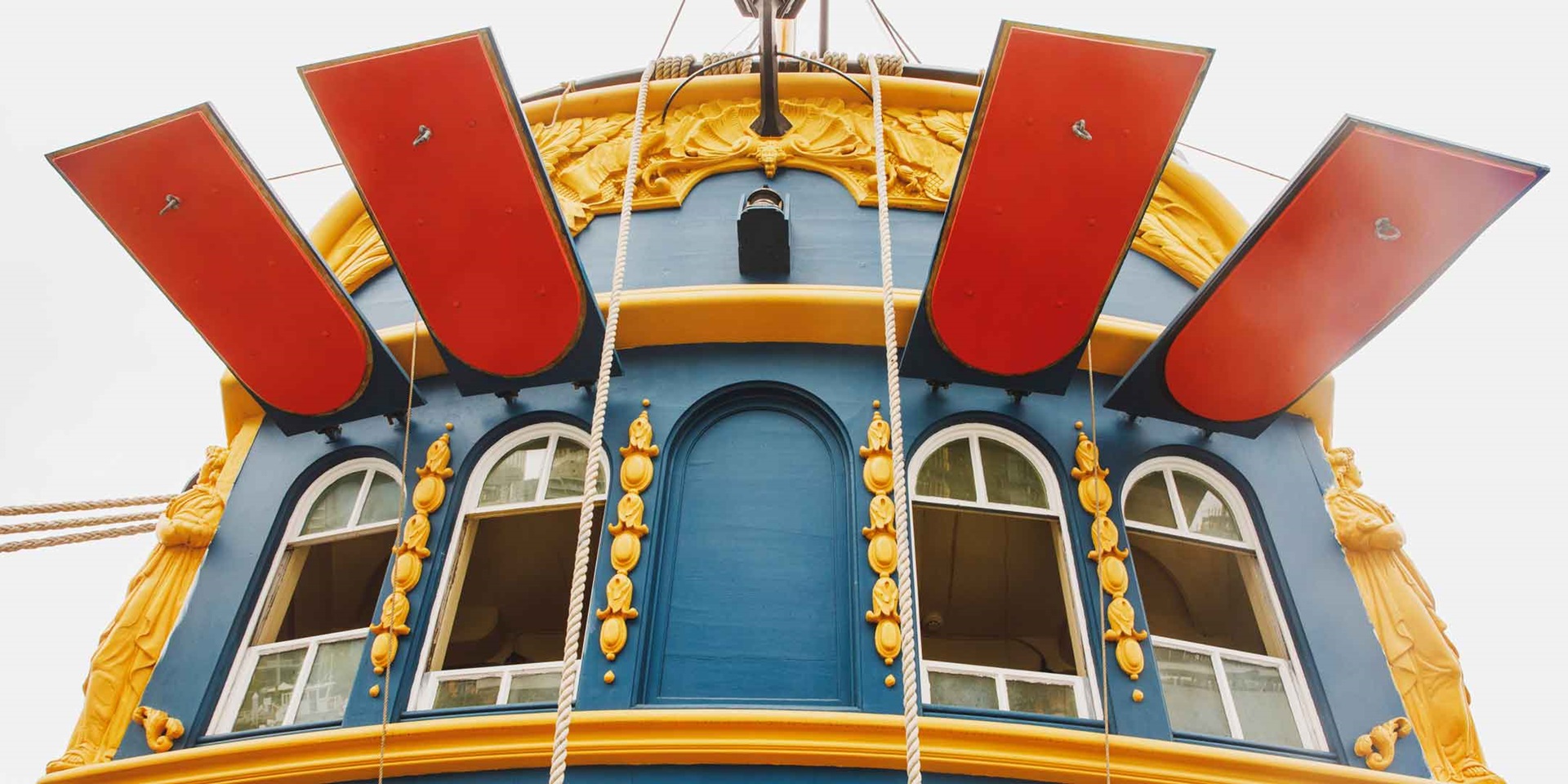Key inquiry questions
• What were the features of the EndeavourHMB ?
• How can we experience what life was like on the 1768–1771 First Voyage of HMB Endeavour?
• Where is the HMB Endeavour now?
Preparing the HMB Endeavour
The HMB Endeavour was originally a bulk coal-carrying ship (collier) named the Earl of Pembroke and was built in the industrial Port of Whitby, England. The ship had been built in the traditions of the 18C. The hull was designed to 'take the ground', to support its weight when the tide fell to allow loading and unloading or repairs below the waterline. Hard, durable oak was used for the frames, planks and deck beams. Pine was used for the decks and masts and the keel was made of elm. There was no glue or screws and few nuts and bolts. Much of the ship was held together with tree nails. Below the waterline was a sacrificial skin of thin planks fastened with large headed nails covered with oak planks. Between these two layers of wood a paste of old rope, animal hair and tar slowed the damage of wood eating shipworms which attacked a ship during long ocean voyages.
When the ship was purchased by the British Admiralty and converted to HMB Endeavour as an exploration vessel changes were required. Built at an initial cost of £2,800 a further £5,394 was spent on the hull, masts, yards, furniture, cannons, guns and stores. A mess deck was needed to house the crew and it was placed on the original beams of the cargo hold, the only place that a deck could be placed.
With the arrival of Banks and his men further changes were made to accommodate them and their stores, furniture and equipment. As a man of privilege and paying a fee of £10,000 to join the exploration Banks and his men were accommodated in the Great Cabin, by rights the private area of the captain, and the officers' cabins, for their study, work and eating area. The officers were then moved to much smaller cabins on the lower deck. Despite these renovations, the ship was described as a cargo ship or box with sails and in Rio de Janiero, Cook had trouble convincing the Portuguese officials of his British Navy status.
Endeavour below decks: https://nla.gov.au/nla.obj-136065213/view
Endeavour's equipment
HMB Endeavour successfully sailed from England into unknown waters, spending three years travelling around the world before returning with Cook, Banks and others being hailed as celebrities for the achievements made in science and exploration.
View the equipment in the galley to learn more about 18C seafaring and the technology that was used on board.
Of interest – the sails, flat bottom, bell, anchors, oven – check what else should be showcased
https://www.sea.museum/learn/teacher-resources/virtual-endeavour
Anchors https://www.sea.museum/learn/teacher-resources/virtual-endeavour/anchors
References to Cook's navigation equipment
https://www.nma.gov.au/explore/collection/highlights/cook-navigational-instruments
How similar or different is the equipment on the Endeavour to modern ships?
How has navigation changed over time?
HMB Endeavour replica
The replica HMB Endeavour is one the world's most accurate maritime replica vessels being constructed from the original Endeavour plans held by the National Maritime Museum in Greenwich, England.
On board the beautifully crafted ship, you can step into the shoes of an 18C sailor and imagine what life was like sailing on the first voyage of exploration. You will be surrounded by almost 30 kilometres of rigging and 750 wooden blocks or pulleys. The masts and spars carry 28 sails that spread approximately 10,000 square feet (930 m2) of canvas. Below, in the galley you will see the fire hearth, a 1768 state of the art stove. Then step into the Great Cabin to see where Cook, Banks and the scientists worked and dined.
Engage in life on board the replica HMB Endeavour on the HMB Endeavour virtual tour page.
How will an experience onboard the replica Endeavour provide insight to life on board?
Where is the original Endeavour now?
The Endeavour returned to England after three years at sea on July 12, 1771. Within a week of its return, the HMB Endeavour was refitted as a naval transport. The ship was sold in 1775 and renamed the Lord Sandwich. After extensive repairs, in February 1776 the ship became a troop transport to carry soldiers to North America to fight during the American Revolution. In August 1778 the Lord Sandwich, along with a fleet of old and surplus vessels, was deliberately sunk (scuttled) in Newport Harbor, Rhode Island in an attempt to blockade the harbour from French ships.
In 2022, maritime archaeologists identified the remains of HMB Endeavour, 244 years after it was deliberately sunk. Want to learn about this extraordinary shipwreck? Visit Deep Dive to learn more.
https://www.sea.museum/explore/maritime-archaeology/deep-dive
Main image: HMB Endeavour. Exterior view of the Great Cabin windows.
